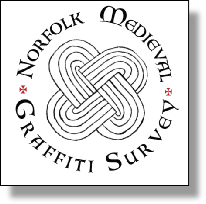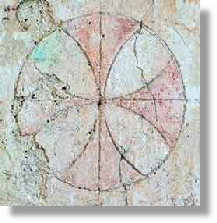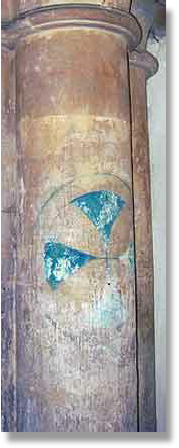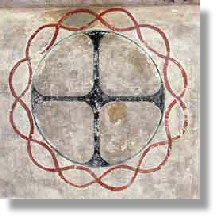









A once common site in churches everywhere, these crosses are often today found as only outlines in the stonework, and as such are sometimes mistaken for graffiti.
When a church was first constructed, or significantly altered, it had to be consecrated by the local Bishop prior to worship taking place in the building. In essence, the structure had to be made into a sacred space. To do this the Bishop would bless the building and anoint it with holy oil, twelve times outside and twelve times inside. Each of the places that were anointed with oil would then be marked with a cross - known today as a ‘consecration cross’.
When originally created each of these crosses would have been painted, most usually in a red pigment, and surviving examples can be found in many churches across England. However, in most churches the pigment has now been lost, leaving only the setting-out lines of the crosses around the walls.
Although usually created with compasses or dividers in the form of a simple cross, leading to them often being mistaken for other ritual compass drawn designs, they were sometimes created in much more elaborate styles - with foliated and engrailed borders. In the most general of terms consecration crosses also tend to be much lager than the average church compass drawn design, but sizes do vary considerably.















